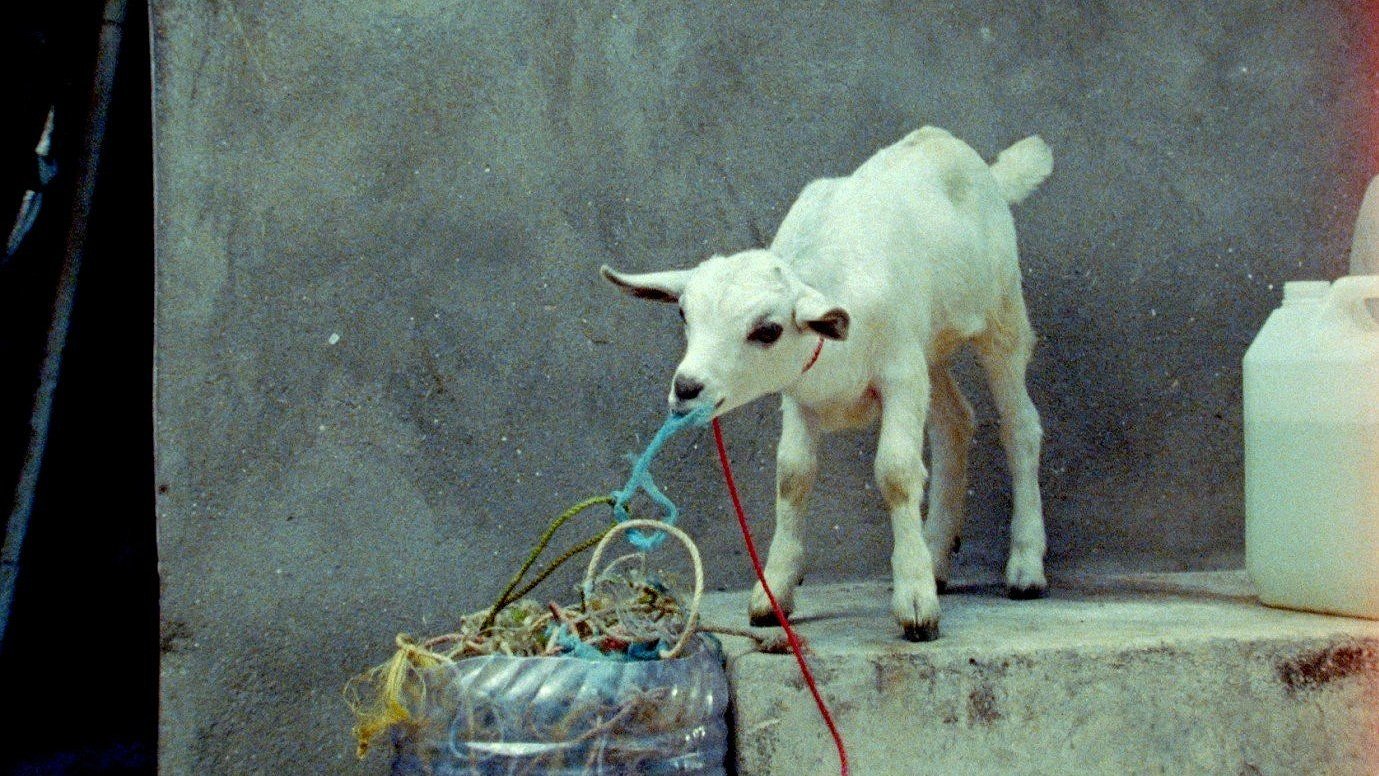Samsara
Lois Patiño’s astonishing religious journey is a unique work that enables one to view the world from a fresh perspective.
This is a film that sets out to do something extraordinary - and for the most part it succeeds. Furthermore, that achievement can be described as a success against the odds because its Spanish director, Lois Patiño, is attempting to capture on film something that, so far as I am aware, has never been done before. His concern is to find a way that will enable even those who are not Buddhist or Hindu to experience the view of the world that stems from a belief in the concept of samsara, that cycle of reincarnation in which death is followed by rebirth again and again.
Patiño’s film is in three distinct but related parts. The first section takes place in Laos. There in scenes that verge on the documentary we view the life of monks in a Buddhist temple but also see how a teenage youth, Amid (Amid Kedmany), himself strongly religious in outlook, uses a small boat belonging to his family to cross the water to attend on an elderly woman, Mon (Simone Milavanh), who is dying. His mission is to ease her passing by reading aloud to her from the Tibetan Book of the Dead. Its wisdom will prepare her for what she will experience as she passes into bardo, that intermediate state before her soul is reborn in a new body, be it human or animal.
I imagine that these roles are taken by non-professional players. They certainly prove believable and suited to a film which poetically portrays life in this region supported by an atmospheric music score by Xabier Erkizia. This part of Samsara is photographed by Mauro Herce whose images find a prominent orange shade in the robes of the monks including young Be Ann (Toumor Xiong) who befriends Amid. If this part of the film is leading up to the death of Mon, it also takes on a meditative quality as it shows us a lifestyle and a setting with which very few of us will be familiar.
What follows involves a change of location to Tanzania and its Muslim community who live by the sea and make a living out of seaweed farming. The crucial link is that this section of the film begins with a goat giving birth to a kid which comes into the care of a young girl, Juwairiya (Juwairiya Idrisa Uwesu), who becomes devoted to it. The clear implication is that this pet given the name of Neema is in fact the reborn Mon. In the film’s most daring step these scenes in Zanzibar are held back to become its third section following one in which we are invited to share what happens to Mon in bardo. This middle section of the film lasting some fifteen minutes or so is presented to us with the request that we close our eyes until the related sounds cease. A special technique is applied here so that, in addition to what we hear including the sound of thunder, a bell and distant voices, we become aware also through our closed eyelids of flashes and touches of colour. How prominent these are may well be aided by seeing the film on a big screen but, even seen at home as I did, it increases the sense of participating in what the film is seeking to convey.
The third section resumes the quasi-documentary style of the opening but now in the very different location of Zanzibar, its contrasted colour tones brought out by having a fresh photographer, Jessica Sarah Rinland, for this final part of the film. Everything here concerned with Juwairiya, her mother (Mariam Vuaa Mtego) and the young goat works beautifully, but I do find that Patiño’s judgment errs when it comes to devoting detailed footage to the seaweed trade. It may be crucial to the people involved in it but, whereas earlier the Buddhist lifestyle of the monks feeds into the main concerns of the film, this emphasis on gathering seaweed feels irrelevant. For that reason, the last section of Samsara contains scenes that provide something of an anti-climax. Nevertheless, that can't take away from what Patiño brings off here. The measure of that lies in the way that the audience views Neema. As we watch the baby goat we see her through Patiño's eyes as carrying the soul of Mon: his vision becomes ours. And as we look at Neema in this spirit we recognise the way in which a belief in samsara leads to seeing a world in which everything created has equal value be it a human being, an animal, or even a plant. In calling Samsara extraordinary I was not exaggerating.
MANSEL STIMPSON
Cast: Amid Keomany, Toumor Xiong, Simone Milavanh, Juwairiya Idrisa Uwesu, Mariam Vuaa Mtego, Bernedeta Gaspar, Ame Simai and Neema.
Dir Lois Patiño, Pro Leire Apellaniz, Screenplay Lois Patiño and Garbiñe Ortega, Ph Mauro Herce and Jessica Sarah Rinland, Art Dir Garbiñe Ortega, Ed Lois Patiño, Music Xabier Erkizia.
Señor & Señora/Jeonju Cinema Project-Curzon Film Distributors.
114 mins. Spain/South Korea. 2023. UK Rel: 26 January 2024. Cert. U.


